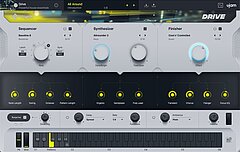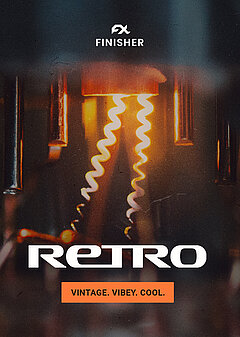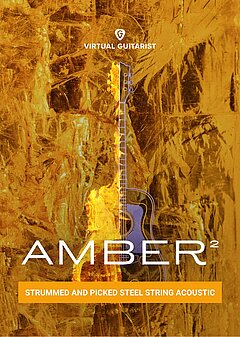How to Get Playlisted on Spotify in a Saturated World
Actionable tips for getting your music in front of listeners, growing your play count, and rising through the ranks on Spotify
JUNE 16TH, 2023
How Spotify playlists work
There are essentially two types of playlists on Spotify: manually constructed ones made by curators, and algorithmically generated ones from Spotify itself. If you create music that fits under a broad umbrella (pop, EDM, dubstep, folk, classical, no matter what it is), your goal as a producer or artist is to get your music played frequently enough that Spotify’s automated playlists pick up your tracks and show them to an listener base of hundreds of thousands or even millions, helping you earn a much larger streaming volume. And the way to get more plays is to get on progressively larger playlists that each give your stream count a nice bump on the way up. Simple in theory, challenging in practice.
You can certainly get lucky and have a song blow up on Spotify, but there are fewer opportunities for this than there are on social media. There are 2 main levers you can use to work your way up through the Spotify ranks, increasing your chances of getting playlisted and netting you more streams over time — let’s dive right in!
1. Driving traffic to Spotify
There’s a method you can employ that has very little to do with Spotify itself, happens naturally, and while it takes a long time, it’s absolutely worth it: growing your brand and online presence. The more well-known your name becomes, the more likely Spotify curators are to discover, engage with, and ultimately playlist your music if they have the right type of playlist for the job. This might sound flippant, but it’s worth remembering that the bigger an artist is, the less they need their music to be playlisted and the more those playlists use artist name recognition to grow the playlists! All this to say, don’t focus so much time on placements that you neglect directly working to grow your artist brand.
As you attract more new fans to your social media and keep them engaged with your content, you can drop in occasional Spotify links to your songs to directly get your listenership trending upward. This isn’t limited to new songs, either — there’s no reason you can’t plug old songs again from time to time. The main limitation of Spotify is that you’re completely at the mercy of the algorithm, and the only thing you can post is music, so having external traffic sources is essential. By increasing your listenership on your own, you increase the likelihood of Spotify showing your music to more listeners, and some of them might just run playlists of their own ... and you can see how things grow from there!
2. Reaching out to curators directly
You can also get in front of Spotify playlist curators without waiting for your music to get noticed. One of the most straightforward is SubmitHub — many EDM producers will be familiar with this service, which allows artists to submit their tracks to music curators and optionally pay a fee to guarantee a reply from the curator. SubmitHub has been around for quite some time and might seem like a dated tool for producers, but if you’re strategic about how you use it, you can still create plenty of playlisting opportunities this way.
If you’re able to find the curator’s contact info, you can also reach out to them directly via email, DMs, etc.; keep in mind that if you take this approach, these people are likely already getting way too many requests for playlisting ... So if you want yours to be viewed favorably, take the time to check that their playlist is a good fit for your music, and make a case for why your music will improve the listeners’ experience and keep them engaged. By framing your message in a way that saves the curator time and effort to find new music and crafting a respectful and fun message, you’re more likely to avoid triggering a negative reply.
Which playlists to aim for
Now that we’ve covered some of the methods you can use to get playlisted on Spotify, let’s address what type of playlists to shoot for. If your music fits neatly into a genre, you can go directly for playlists that fit the same genre; the issue with this approach is that if your music sounds too similar to everything else on the playlist, its curator may not want to feature it. Curators know that listeners want at least a little bit of variety, so it’s important to have a few defining features that make your music unique. The way you sing, specific instruments you add, borrowing techniques from other genres, anything that breaks from the mold while still aligning yourself with an overarching genre.
If you like to stray off the beaten track and have a very unique sound, you’ll run into a different problem entirely: The playlists your music works with will likely have very small listenership, so you’ll need to get placements on more of them in order to start getting picked up more by Spotify recommendations and algorithmic playlists. There’s also an advantage in that your music will be an easier sell to curators looking to grow their listener base, whether you reach out to them directly or they happen to stumble upon your music.
Lean into what feeds your musical passion; no matter what path you choose, there are curses associated with being mainstream and with being more niche. Accept the tradeoffs, create what you love, and search for opportunities to grow on Spotify that fit with how you operate!
Wrapping up
While there are plenty more specific approaches you can take to getting playlisted, most strategies you’ll find are still based on these fundamental principles. Spotify rewards artists for getting streams with more streams ... and once you get enough streams, you have a higher chance of achieving placements on big playlists that get you way more streams.
This process is a game and there are plenty of achievements to unlock along the way; when the grind starts feeling tough, try making it more fun by viewing each necessary step as a challenge to overcome, and keep moving toward your ultimate goal for Spotify and your artist career as a whole!
About the Author
Harry Lodes is a copywriter, marketing consultant and content writer for audio and ecommerce brands. He lives in the Philadelphia area, releasing Eastern/Western hybrid EDM under the artist name KAIRI hearkening back to his roots in Berklee College of Music.
Stay up to date
Sign up and we’ll send you an e-mail with product news and helpful stuff every now and then. You may unsubscribe at any time.
Defy Limits
We develop software solutions that enable people to create, consume and interact with music.




